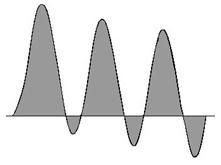You are using an out of date browser. It may not display this or other websites correctly.
You should upgrade or use an alternative browser.
You should upgrade or use an alternative browser.
Symmetrical vs Asymmetrical
- Thread starter lemonman
- Start date
- Status
- Not open for further replies.
drbond24
Senior Member
- Location
- Barboursville, West Virginia
- Location
- Lockport, IL
- Occupation
- Semi-Retired Electrical Engineer
One of them has an "A"? 
The amount of current that will flow during a fault condition will depend, in part, on the exact moment in time that the fault takes place. More specifically, it will depend on where you are in the voltage cycle, whether the voltage is at the top, the peak of the sine wave, or whether the voltage is close to crossing the zero point, or whether the voltage is near the negative peak. A symmetrical fault is one in which the voltage is at (or at least close to) the zero point in the cycle when the fault takes place. From that time forward, until some breaker trips to terminate the event, the voltage will be above zero the same amount of time that it is below zero.
An assymetrical fault is calculated to take place at the point in the cycle for which the voltage is at its highest peak. From that time forward, the fault current is driven not only by the voltage's up and down cycle, but also by the fact that the voltage started above (or below) the zero axis. The impact of this initial voltage level is that current will be higher, for a short amount of time. Two or three cycles after the fault began, the current you see from a symmetrical fault and the current you see from an assymentrical fault will be the same.
The amount of current that will flow during a fault condition will depend, in part, on the exact moment in time that the fault takes place. More specifically, it will depend on where you are in the voltage cycle, whether the voltage is at the top, the peak of the sine wave, or whether the voltage is close to crossing the zero point, or whether the voltage is near the negative peak. A symmetrical fault is one in which the voltage is at (or at least close to) the zero point in the cycle when the fault takes place. From that time forward, until some breaker trips to terminate the event, the voltage will be above zero the same amount of time that it is below zero.
An assymetrical fault is calculated to take place at the point in the cycle for which the voltage is at its highest peak. From that time forward, the fault current is driven not only by the voltage's up and down cycle, but also by the fact that the voltage started above (or below) the zero axis. The impact of this initial voltage level is that current will be higher, for a short amount of time. Two or three cycles after the fault began, the current you see from a symmetrical fault and the current you see from an assymentrical fault will be the same.
K8MHZ
Senior Member
- Occupation
- Electrician
I think we may need more information. Charles has pointed out the difference as applied to faults. Conductors can also be symmetrical or asymmetrical. A symmetrical conductor will maintain a balance whereas an asymmetrical conductor (cable would probably be a better term) may not. An example would be coaxial cable vs. parallel or twisted pair feed lines. Coax is asymmetrical as the inside and outside conductors have different properties and under certain parameters will exhibit a large amount of line loss. Parallel feed line, on the other hand will not and instead will bare purely resistive losses over a wide range of frequencies and standing wave ratios as it is symmetrical and thus 'self canceling'.
Antennas can also be either symmetrical or asymmetrical. A center fed dipole is symmetrical whereas an off center fed dipole is asymmetrical. Another form of asymmetrical antenna is a ground plane antenna which is usually vertically polarized. A fractal antenna is usually symmetrical in design.
In short, anything symmetrical will have two or more parts that are the same or mirror images of one and other and anything asymmetrical will have two or more parts that are different from each other.
Antennas can also be either symmetrical or asymmetrical. A center fed dipole is symmetrical whereas an off center fed dipole is asymmetrical. Another form of asymmetrical antenna is a ground plane antenna which is usually vertically polarized. A fractal antenna is usually symmetrical in design.
In short, anything symmetrical will have two or more parts that are the same or mirror images of one and other and anything asymmetrical will have two or more parts that are different from each other.
charlie
Senior Member
- Location
- Indianapolis
Picture of an asymmetrical sine wave
Picture of an asymmetrical sine wave

I like pictures.
Picture of an asymmetrical sine wave
One looks like an ordinary sine wave, the asymmetrical one looks like this:lemonman said:What's the difference?

I like pictures.
- Status
- Not open for further replies.
